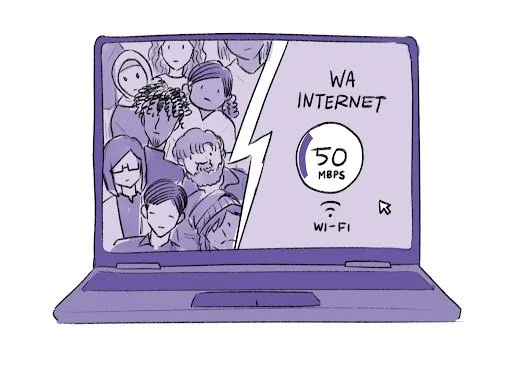The Digital Divide in Washington Immigrant Communities
A blog post by Cindy Fu
In modern society, there is an increasing need to not only have access to but to be proficient in utilizing information and communication technology (ICT). Whether that be to apply for jobs on online employment websites, file tax returns and pay bills, or even make a doctor’s appointment, a significant percentage of immigrants are unable to obtain and utilize these resources.
According to the American Immigration Council (AIC), approximately one in every seven residents in Washington state is foreign-born. Yet 21% of immigrants who speak a language other than English at home have “no computer experience, ”compared to 5% percent for English speakers. according to a 2015 Program for the International Assessment of Adult Competencies (PIAAC) study [1].
In addition, 10% of Seattle residents who speak a primary language other than English completely lack internet access according to a 2018 Seattle Times study. This lack of internet access affects not only the ability to access health and career services, but also the ability to feel connected to a community. The exchange of content and information on a global platform allows immigrants to stay connected with family and friends outside of Washington or the United States, monitoring the events of their home countries, and also keep updated with local news. As such, the study concluded that “social inclusion for [immigrants/refugees] is often conceptualized as an information problem.”[4] Without proper access to the internet or ICTs, these immigrant groups may be excluded and feel pushed to the margins of society.
Despite the increasing pervasiveness of needing ICTs to actively engage in today’s modern society, many groups are still left behind, whether due to lack of access, instruction, or interpretation of these technologies. And while across the U.S. immigrants account for about one-sixth of the adult workforce, they “make up more than one-third of the workforce without digital skills'' according to the PIAAC. Not being able to use ICTs is a major disadvantage to these immigrant groups. The pandemic and nationwide lockdown of 2020 resulted in a major shift from in-person facilities and services to online. Among many reasons for the disproportionate amount of non-white deaths due to COVID in the early stages of the pandemic was lack of access to telehealth services offered by hospitals as a “low-risk way for patients to see medical professionals”[2]
With the COVID-19 pandemic bringing awareness of the severity of digital divides, Washington state has moved forward with bipartisan support for numerous bills to fund internet and technology access across many groups, including HB 1723 which specifically had funding allocated for multi-language communities.
The Washington State Broadband Office (WSBO) under the Department of Commerce is currently making efforts to improve and ensure access to broadband internet resources for all Washington residents through “a five-year action plan and a first-ever statewide digital equity plan”[3]. This plan includes finding a contractor to support their efforts for equitable access and deployment of digital equity services, including telecommunications infrastructure projects, planning and program development and outreach, broadband mapping and data analysis, and much more to improve the future of technological access for Washington state residents. Now more than ever, with the abundance of fiscal and other resources being poured into this issue, the importance of understanding underserved groups including immigrants who lack equitable technology access has never been more important.
[1] Andrade, Antonio Diaz, and Bill Doolin. "Information and Communication Technology and the Social Inclusion of Refugees." MIS Quarterly, vol. 40, no. 2, June 2016, pp. 406-416. JSTOR, www.jstor.org/stable/26628912.
[2] Cherewka, Alexis. "The Digital Divide Hits U.S. Immigrant Households Disproportionately during the COVID-19 Pandemic." Migration Policy Institute, Migration Policy Institute, 3 Sept. 2020, www.migrationpolicy.org/article/digital-divide-hits-us-immigrant-households-during-covid-19.
[3] "Open Broadband Equity, Access and Deployment and Digital Equity Planning Program." Contracting with Commerce, Washington State Department of Commerce, 19 Oct. 2022, www.commerce.wa.gov/contracting-with-commerce/open-broadband-equity-access-and-deployment-and-digital-equity-planning-program/.
[4] Patrick, Anna, et al. "Disconnected in isolation: How the coronavirus pandemic shed light on the digital divide." The Seattle Times, 10 June 2020. Seattle Times, www.seattletimes.com/seattle-news/disconnected-in-isolation-how-the-coronavirus-pandemic-shed-light-on-the-digital-divide/.

